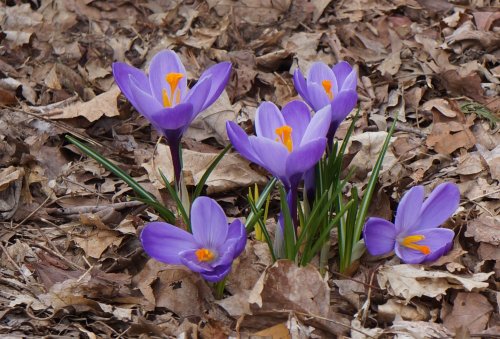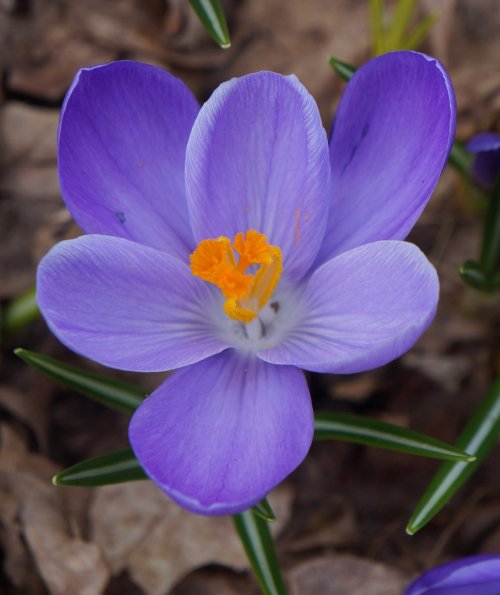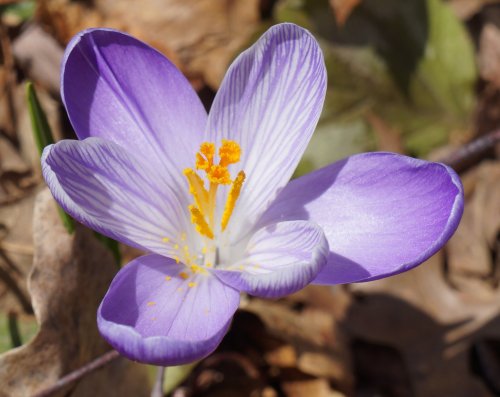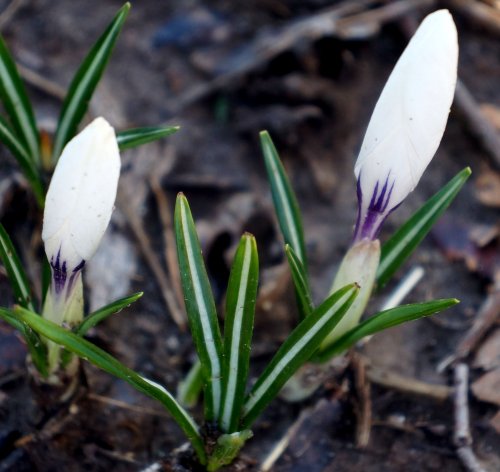
Crocuses, Crocus sp., are blooming everywhere at the moment. The dark purple are my favorite, though the yellow come up a few days earlier in my yard. This particular patch is from the Grounds for Sculpture near Trenton, NJ. The ones below are from my yard.
The spice saffron is made from the stigmas of a particular species of crocus, with much longer styles than the garden type. It must be harvested by hand, with only a tiny bit coming from each flower and is therefore traditionally one of the most expensive of spices.
Crocuses are native to Eurasia, but can be found easily in suburban NJ lawns and gardens in early spring.

Difficult to see above, but there are three stamens (the male, pollen-bearing parts) in crocuses, a hint that they are in the Iris family.

They have three petals and three sepals, but all six are basically identical and fused together at the base into a tube. In the picture above the center part is a sepal, flanked by two petals, with another sepal to the right. Basically identical. Everything about the flower comes in threes (or what looks like sixes). That's typical for monocots, like lilies, and other members of this family, the irises.

Also classic for a monocot are the parallel veins in very linear leaves. Cultivated crocuses also generally have a white stripe down the middle of the leaf, which helps in separating them from other grass-leaved plants. Most Iris family plants have all the leaves compressed into a straight line at the base, but crocuses do not seem to.










No comments:
Post a Comment